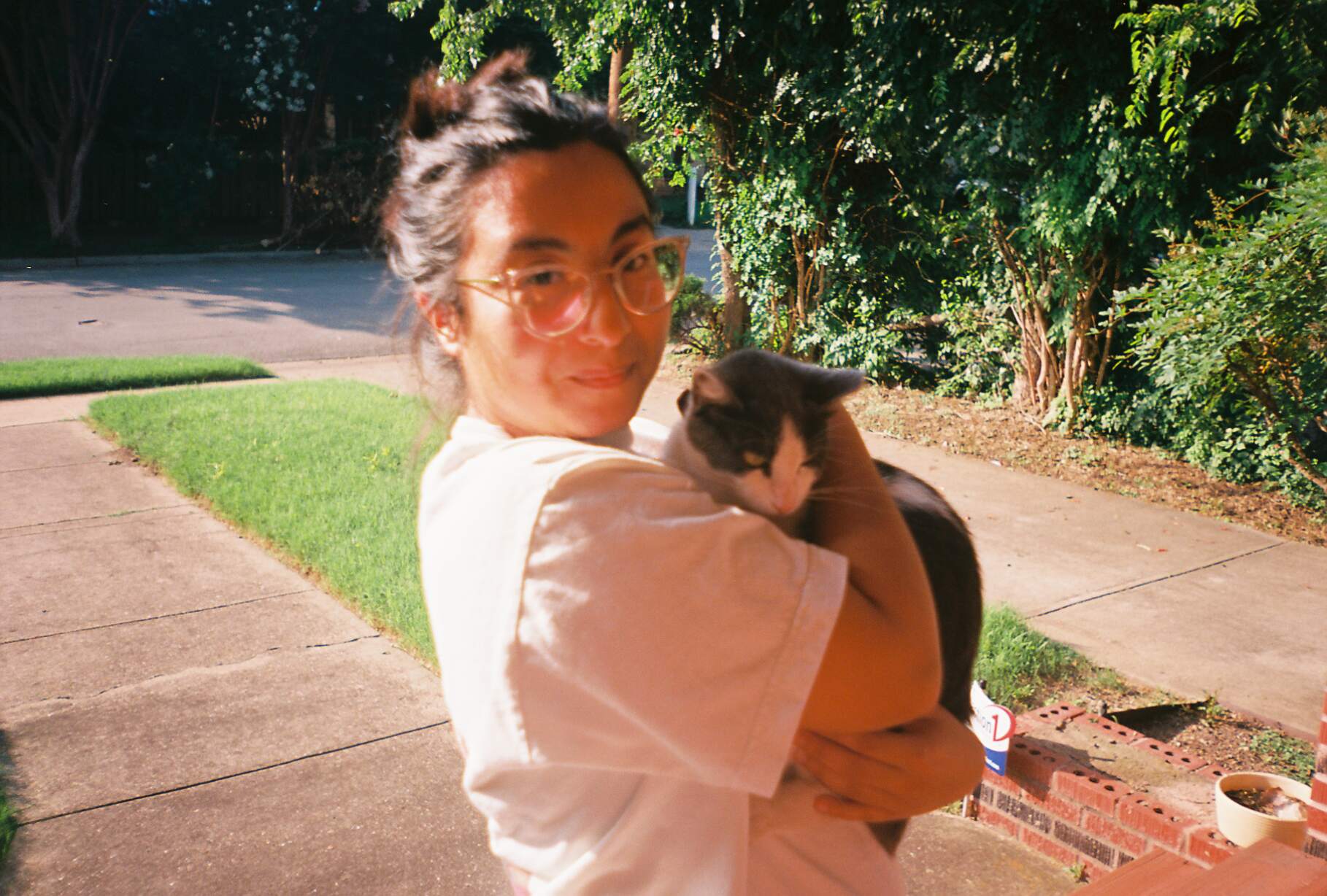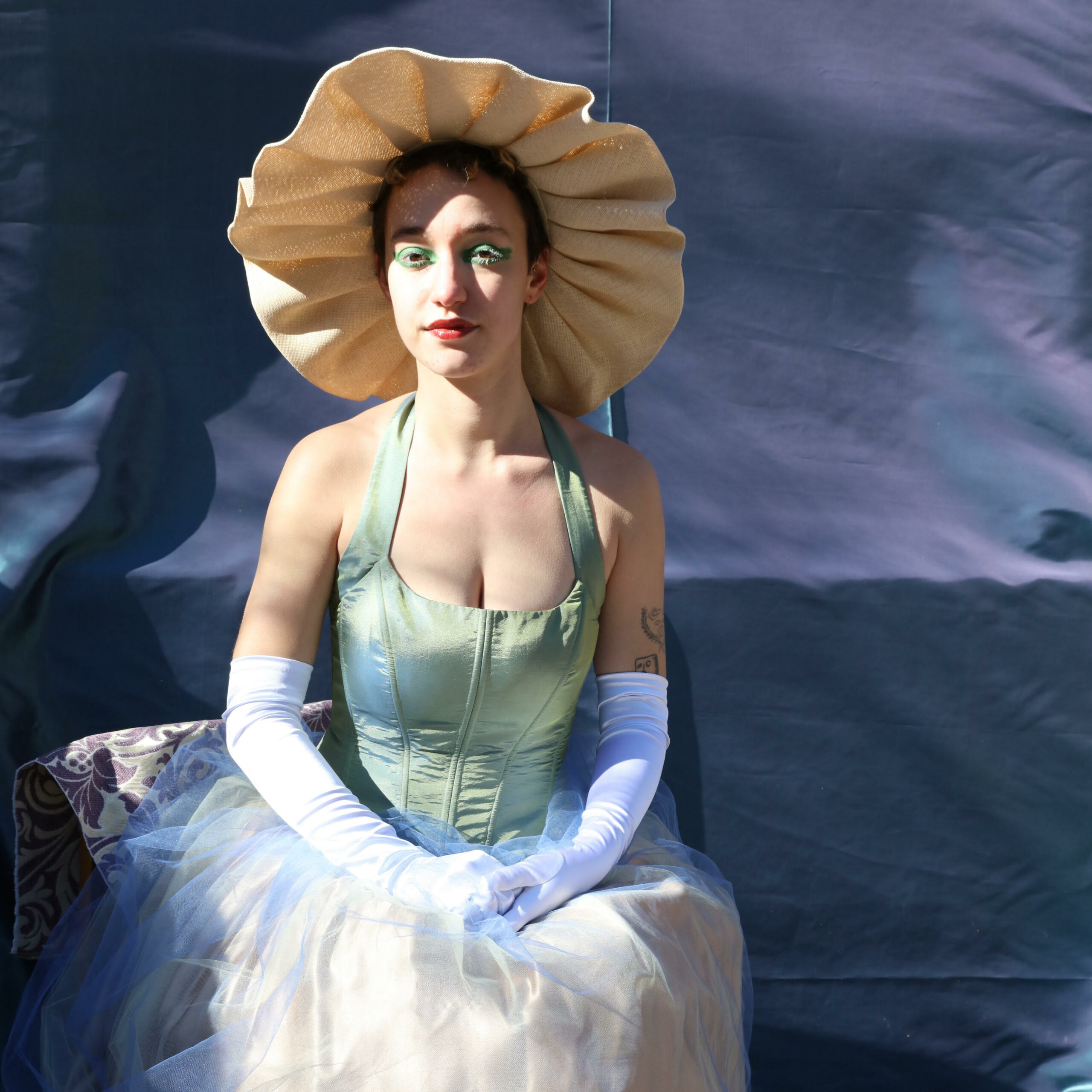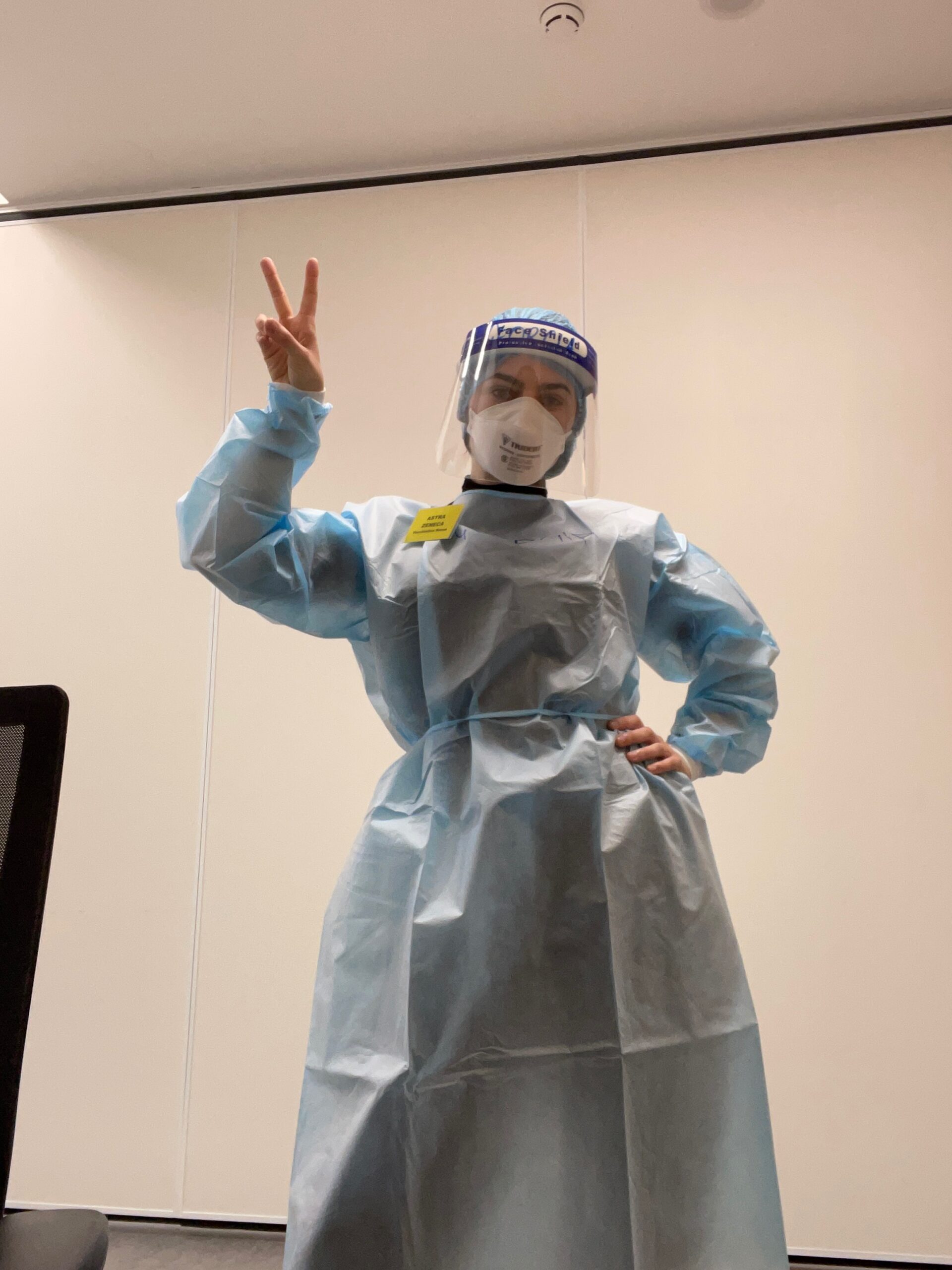There’s an element of misdirection behind Water From Your Eyes. The Brooklyn-based duo behind Water From Your Eyes—Nate Amos and Rachel Brown—describe their solo projects (This is Lorelei and Thanks For Coming, respectively) as confessional, but there is something decidedly less straightforward about the experimental dance music they create together. Spoken-word interludes that sound like they were run through Google Translate one too many times, the odd track that could’ve been was beamed straight from the golden hills of Laurel Canyon, and synth-laden industrial landscapes…it feels like every time you get a sense for what Structure will sound like, Amos and Brown re-orient you. Structure is a bit like a maze: there are conceptual dead-ends littered throughout to mislead you, and you won’t know the full shape of the maze until you’ve traveled down every path.
Billed as a “concept album that pokes fun at the idea of concept albums,” Structure can sound high-minded and intimidating at first. So, like any good trickster, Nate and Rachel first disarm their audience with some humor. Self-effacement and self-deprecation become tools for deception: “A lot of how we present ourselves is to mislead, to double down on the flex of how good the music actually is,” Amos said in reference to their press photos, with Rachel adding, “It’s a nice balance that we’re goofy, even if it may not seem like it if you listen to our music.”
Together, Rachel and Nate make music with a real sense of curiosity; the two versions of “Quotations” are a testament to this, an experiment in how a few small changes can change the emotional core of a song. You’ll enjoy Structure more if you do as Rachel sings in “When You’re Around” and “get lost in the sounds.” And if you get tricked along the way, that’s alright—there is a joy in being led willingly astray.
Check out our conversation with Rachel and Nate below, where they talk about everything from their evolving songwriting style, abandoned album concepts, and weed.
Slumber: The press release said that Structure was a concept album that pokes fun at concept albums. What inspired you to subvert the idea of a concept album?
Nate Amos: That’s just kinda how it came out. Honestly, most of the discussion about it being a concept album, even between us, started after it was mostly done
Rachel Brown: I feel like it was already made before we realized there was any concept to it. The organization is conceptual, but not on purpose; it just happened. We also talked about how all albums are concept albums.
Nate: Is there really such a thing as non-conceptual art? Every time we talk about it this is the whole we fall into. Everything’s conceptual, so I guess that’s kinda the joke too.
Rachel: Also this is like, the least conceptual album we’ve ever made.
Nate: In the past, every album has had a particular lyrical mechanism, especially the early stuff. It’s like identifying weird side characters in movies—
Rachel: Or perspectives of animals in sad situations. I feel like we stopped using those kinds of tropes.
Nate: We let go of the idea of a particular lyrical mechanism. This time around, once the instrumentals were done, I might have a handful of lyric fragments that we’d sit down with and a lot of it would just come from whatever Rachel is writing about at the time.
Rachel: Besides the two songs that you wrote.
Nate: “When You’re Around” and “Monday” I wrote the lyrics for because they were destined to be Water From Your Eyes songs but were written for other purposes and other projects. It used to be a lot more of us sitting down and work out lyrical concepts together and now it’s turned more into the system where I’m trying to prompt Rachel to go off on stuff. That’s more for the newer stuff, but Structure was a big step in that direction, [specifically] “My Love’s,” “Track Five,” and “Quotations.”
Slumber: How do you know when a scrapped song from a different project fits WFYE?
Nate: It used to be harder to tell. I think Somebody Else’s Song was the one where that process was figured out. That album is really solid, but I don’t think it represents what we really are as a band because a handful of the things would have made more sense as Lorelei songs but they got shoved on there.
Rachel: I think it works as an album because it is quite literally me singing somebody else’s songs. It’s also like a breakup album, our breakup.
Nate: There’s a clearer division now, and making Structure was how that happened. At that point, there was this weird cross that was happening because This is Lorelei had been a largely experimental project while Water From Your Eyes had been more pop. Water From Your Eyes gradually got more experimental and Lorelei gradually became more pop-focused, and when Somebody Else’s Song was being made they were right at the same place. Now, I consciously approach writing for those projects very differently, whereas before it was really just making a ton of stuff and putting it wherever it made the most sense. Both of those projects have a more fully developed identity at this point.
“...'Structure' is definitely our best attempt so far at capturing what this band actually is, and I think that’s by a pretty wide margin too.”
Slumber: Do you think Structure better captures your sound or what you are going for as a band?
Nate: Definitely. Honestly, in terms of an “album album”, I think we’re both really happy with the 33:44 album. But Structure is definitely our best attempt so far at capturing what this band actually is, and I think that’s by a pretty wide margin too.
Rachel: I think “Break” represents us better than any of the other songs from that album. I feel like “All A Dance” is similar.
Nate: That’s kind of the bridge between the earlier stuff and the later stuff, because it was beginning to be a little more aggressive and longer-form songs. A big thing with Structure is that it was the first album that was made entirely after we figured out what our live shows were going to be like, whereas Somebody Else’s Song came out after we’d been playing for a while. The first version of “Quotations,” “My Love’s,” and “Track Five” were all specifically designed to try and capture what the live shows were like while still leaving space to add.
Slumber: Four of the songs on Structure have the same lyrics; were you challenging yourself to re-use the lyrics?
Nate: I really loved the Captain Beefheart spoken word interludes because they’re kind of like nonsense and impressionistic to the point where they don’t really make sense grammatically and I wanted to find a weird way to pull that off. It was more of an experiment and just seemed to work really well.
Slumber: Nate, you said that the goal on “You’re The Embers” was to make the words disappear and have the voice be the instrument; it felt very reminiscent of the approach behind sound poetry.
Nate: It’s really similar but almost like the opposite approach. Rather than being no words, it’s the oversaturation of words where the same thing is accomplished—that disappearance where words become nothing. With the two versions of the song “Quotations,” [the idea] was that having a different context for it could entirely change the way the listener perceives the lyrics because they’re all vague enough that you have to find your own meaning. So if you’re trying to find your own meaning in this more atmospheric light-hearted setting, you’re likely to take nicer things out of it than if you’re inside a weird nightmare factory song.
Slumber: I read that this isn’t the first time you’ve made a concept album, with a previous interview mentioning a scrapped slash fiction about Criminal Minds and Star Trek.
Nate: So that was the beginning of Somebody Else’s Song. It was part Criminal Minds part Star Trek: Enterprise and the working title for it was Hotch’s Trip for Agent Hotchner and Trip. None of these songs ever had lyrics written during this period, this was an abstract idea when I was writing music for it. There are seven more instrumentals with melodies that were written at the same time as “Adeleine” and “No Better Now” that still exist as a part of Hotch’s Trip and probably will never be anything else.
Slumber: Are there any other abandoned concept albums?
Nate: Not that I can remember.
Rachel: I forgot about Feels A Lot Like! That one was a weird concept, that was about Jazz as a dog.
Nate: I think the working title for that was Jazz Kennedy Is A Dog In A Dog World.
Rachel: It’s about the loss of his father.
Nate: Every song was from the perspective of Jazz at a different location in the painting that we used for the album cover. All this stuff ends up having nothing to do with what it turns out to be.
Rachel: Nobody would ever obviously think that “Oh wow, this is supposed to be about this very specific dog.”
Nate: That’s what the Hotch’s Trip thing was supposed to be, just a mechanism.
“I feel like ['Structure'] was already made before we realized there was any concept to it. The organization is conceptual, but not on purpose; it just happened”
Slumber: Rachel, I know you’ve done the cover art for previous releases; did you do the cover art for Structure too?
Rachel: I like going to the NYPL Public Domain website and going through art for cover art. That’s what I’ve been doing since the first album cover. Arthur [Grunenberg] did a bunch of sketches of dancers, so all of the art for Structure is using his sketches. I’m not a graphic designer, I just keep doing it ‘cause that shit’s free. We’re both Capricorns, so we’re all about savings.
Slumber: I know Rothko was mentioned as an inspiration for this album; are you both fans of his work?
Nate: I studied art history and it’s weird because they’re not compatible mediums so I don’t know what it means, but I feel like Mark Rothko has had more of an effect on how I approach making music than any musician has. Rothko and Francis Bacon, in particular. In terms of studying people’s creative processes and trying to work the way they work, I’m much more interested in the way they work than any musician.
Slumber: Are there any artists whose approach inspires you, Rachel?
Rachel: I remember being very inspired by the way David Burman constructs sentences and evokes emotions through his words. I love Philip Glass, but I don’t think he inspires me, because there’s absolutely no way I could possibly do anything he does. I don’t know, Nate’s an inspiration. I like what a lot of people do, but I also know that I don’t possess the talent that those people have.
Slumber: That’s surprising to hear because Structure has gotten picked up by a lot of big-name publications like NPR, Pitchfork, etc; clearly you must be doing something worthwhile.
Rachel: I think Tom is just a great PR guy.
Nate: Structure is in my mind the first good album. I’m not really surprised it’s getting more attention than the other stuff. With Structure, I was just wallowing in every song for a month per song and tweaking things. It’s kind of set up where I’m prompting Rachel to work fast and get an impressionistic thing without really overthinking anything. You’re kind of like in an alien enough place that it would be hard for you to directly take ownership of things.
Slumber: There’s this quote from you, Nate, where you say “The important thing to remember is that this is weed music.” Can you both talk a little bit more about how weed fits into your creative process?
Nate: The reality is that during that period of time I was smoking weed all day every day. Since then, I’ve gotten into a place where I write when I first wake up, before coffee or anything, and try to put in a couple of hours. [When I was] putting those songs together [for Structure] it was a really long period of time where essentially I would just make a bunch of random stuff, find something that felt interesting to chase—usually a ten-minute chunk of everything going on at once—and then chipping away and sculpting down both in terms of length. It was a long exploratory process that was largely just me playing these songs over and over again, smoking weed, and pacing back and forth until I had an idea.
Rachel: I guess when we hang out, we smoke.
Nate: Whenever the lyrics happen we’re always smoking weed. Honestly, it’s not even great music to listen to high.
Rachel: It was just music that was made while high.
Nate: It’s not like we’re smoking weed because it’s a trippy thing to do.
Rachel: We just happened to smoke weed.
Nate: I don’t know how much of an influence weed actually has on it.
Rachel: I think we’re just weed people. I’d like to smoke weed for the rest of my life. I don’t even really like getting high that much, I just like smoking.
Nate: It’s part of the ritual, getting in the zone for making music. But like I said I specifically try not to do that these days, but with Structure, it was just…
Rachel: Weed time.
Nate: Maybe saying that it’s weed music, fundamentally, isn’t totally accurate.
Rachel: You were high when you said that.
Nate: It’s also a self-deprecation reflex. I probably was feeling self-conscious about talking about Mark Rothko and shit.
Rachel: I feel like it’s weed music in that at the end of the day, we’re not really trying to do anything besides hang out.
Nate: There’s no particular goal beyond exploring what could be made, which is a goal in itself. I honestly just don’t know how to do anything else.
“There’s no particular goal [on 'Structure'] beyond exploring what could be made, which is a goal in itself. I honestly just don’t know how to do anything else. ”
Slumber: I saw that your vinyl comes with a sewing kit and was wondering if there was a story behind that?
Nate: Yeah, that’s Rachel. That was purely just a weed idea, there’s no rhyme or reasoning behind it.
Rachel: You know how people have fun pins? I thought it’d be really fun if we had shirt buttons so that evolved into a whole sewing kit which is actually a really useful thing to have and a funny thing to get with vinyl. It was similar to our press photos of us in Times Square wearing “I Love NY” shirts.
Nate: A lot of how we present ourselves is to mislead to double down on the flex of how good the music actually is.
Rachel: It’s just funny, a sewing kit. But also I really need one, I hope they give me one because I have some buttons I need to replace. When we’re brainstorming ideas that aren’t related to music I feel like we’re just kind of goofy people. It’s a nice balance that we’re goofy, even if it may not seem like it if you listen to our music.
Listen to ‘Structure’ out now via Wharf Cat Records.


